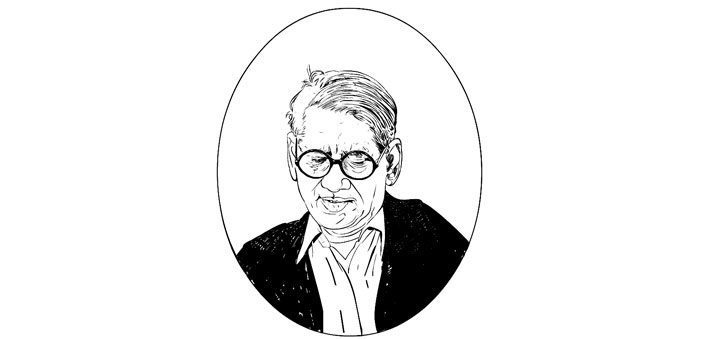Architect and urban planner par excellence (1930-2015)
Charles Correa, architect, urban planner and activist, credited with the creation of modern architecture in post-Independence India, was born on 1 September 1930 in Secunderabad, and passed away on 16 June 2015 in Mumbai.After higher studies at St. Xavier’s College, Bombay, he went on to study at the University of Michigan (1949 -53) and the Massachusetts Institute of Technology (MIT) (1953–55).
In 1958, he established his own Mumbai-based professional practice and went on to be conferred the Padma Shri in 1972, the Padma Vibhushan in 2006 and the 1984 Royal Gold Medal for architecture, by the Royal Institute of British Architects, as also Goa’s highest civilian honour, the ‘Gomant Vibhushan’.
Among his sterling work which stand tall are the Mahatma Gandhi Memorial Museum, Ahmedabad; the Kanchanjunga Apartment tower, Mumbai; the Jawahar Kala Kendra, Jaipur, Navi Mumbai city, MIT’S Brain and Cognitive Sciences Centre in Boston, Parumala Church and the Champalimad Centre for the Unknown in Lisbon, to name a few. In 1984, he founded the Urban Design Research Institute in Bombay, dedicated to the protection of the built environment and improvement of urban communities.
He hated glassy towers, and instead of creating inept replicas of a Manhattan skyline, designed buildings with terraces and courtyards that responded to the India that surrounded them and did not seek to cocoon the resident. “Visual quiet” were his watchwords. He loved unobstructed spaces and they seeped into a lot of his projects, incorporating the concept of “open-to-sky” spaces.
“Being able to see the sky from inside a building can make a difference between liveable habitat and claustrophobia”, he would say, placing special emphasis on prevailing resources, energy and climate as major determinants in the ordering of space in all his creations. For more than half a century, Correa championed modern architecture, planning cities and designing nearly 100 buildings in the country, from luxury condominiums to housing for the poor.
The quintessential Renaissance man, all his projects breathe the same concept. He extended these ideas to whatever he touched; his projects range from low-cost houses and educational institutions to state-of-the-art research centres and industrial townships, to cultural centres and urban hubs.
A legacy that he has left behind is a rare spirit of frugality, freedom, sustainability and rootedness in Indian culture, traits that distinguished his work and which shaped the trajectory of post-colonial modern architecture in India.
But alas, the knight in shining armour that Mumbai deserved was thwarted by administrations and lobbyists who tripped him up and he was very bitter at how Navi Mumbai turned out.
Two years ago, Correa donated all his drawings, models and records to the Royal Institute of British Architects as he couldn’t find any archive whose standards lived up to his own. In 2013, the Institute held a retrospective exhibition, “Charles Correa – India’s Greatest Architect”, about his influence on modern urban Indian architecture.
“To work in India is the great advantage of life in the Third World. The issues are so much bigger than you are; they give you a chance to grow,” Correa wrote in his book ‘Housing and Urbanization’. In another book ‘A Place in the Shade’, Correa talks about Mumbai, “While it is getting better and better as city, and disintegrating (very rapidly and quite unnecessarily) as environment…perhaps what we are experiencing is the last burst of energy. . . the spastic twitches before the end…A state of euphoria has set in. Maybe that’s what is happening to us in Bombay, as every day we find it getting to be more and more of a great city… and a terrible place”.
Correa has done pioneering work in urban issues and low-cost shelter in the Third World. He was also involved in researching alternatives to water recycling, renewable energy, rural habitats, conservation and regional biodiversity. His philosophy and work will certainly inspire several generations to come.

